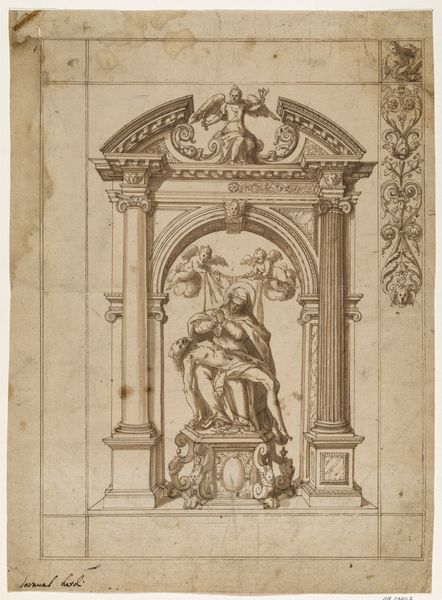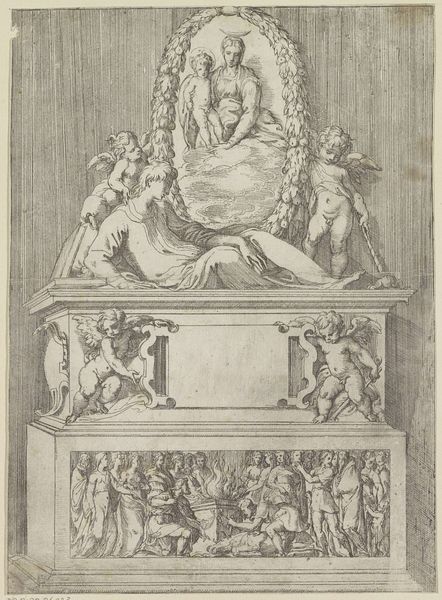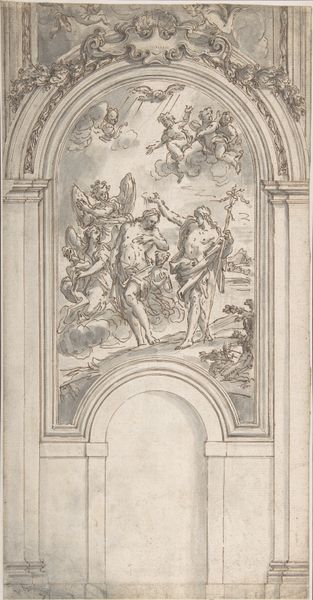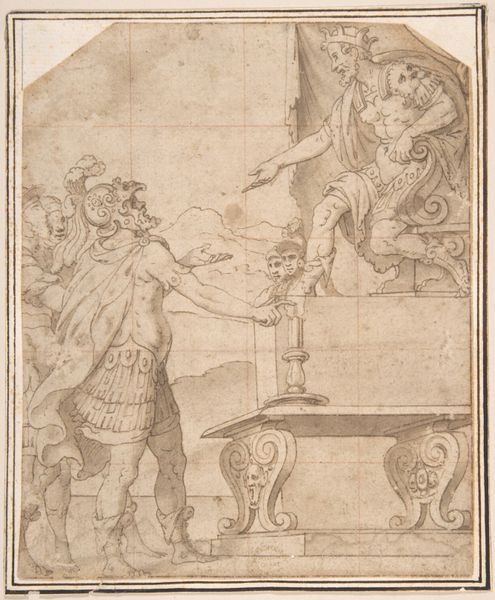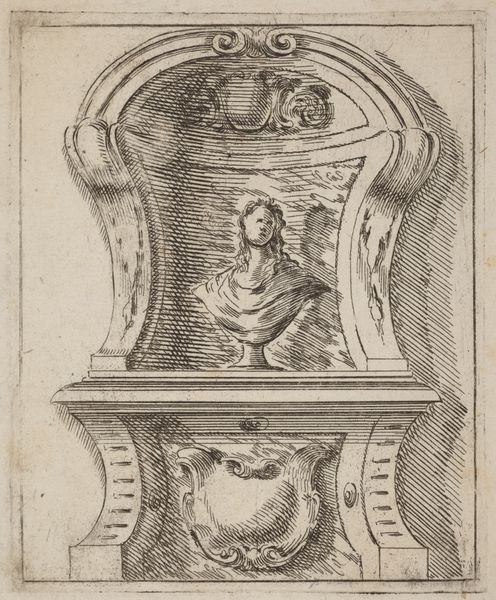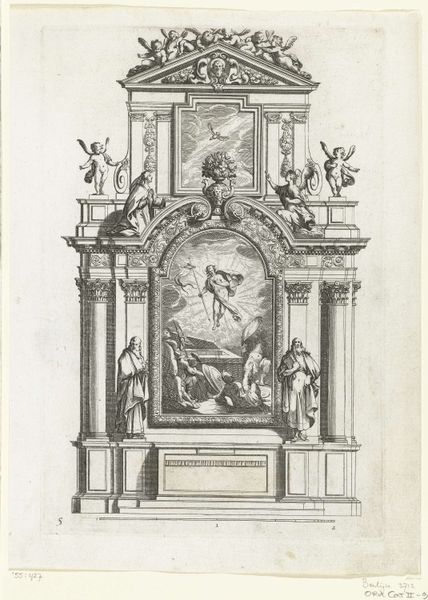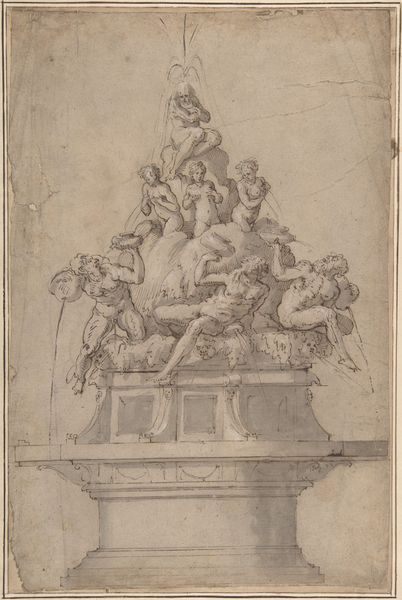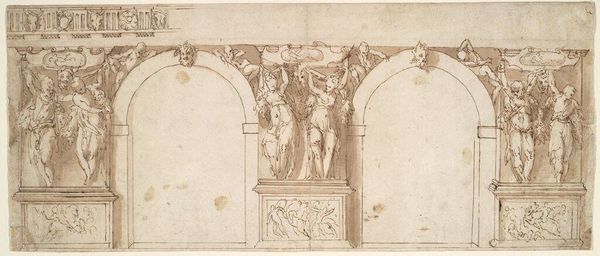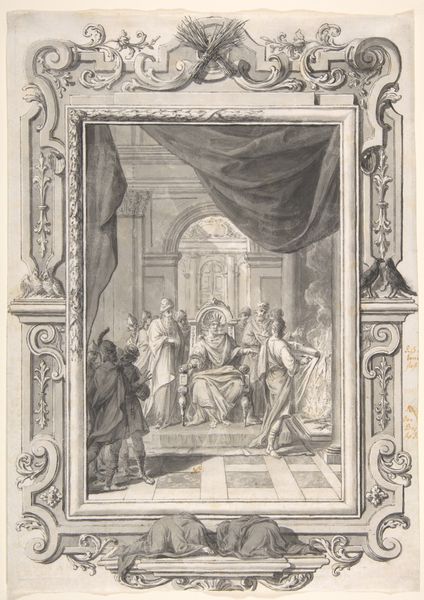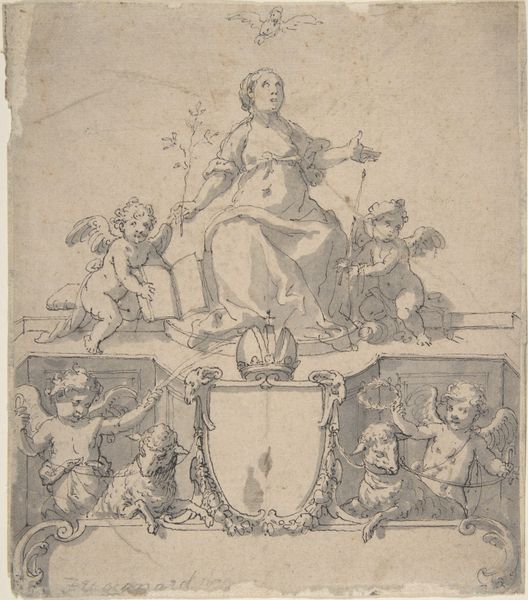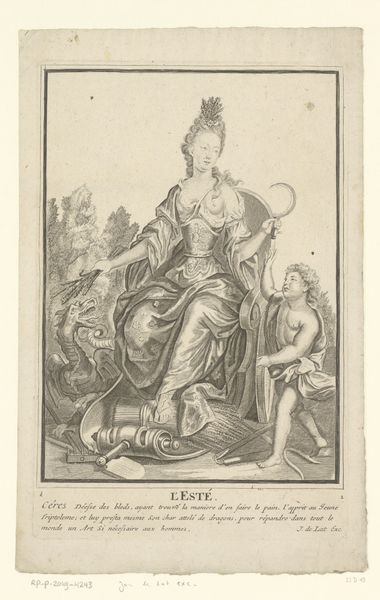
Pietà (Design for an Altar) 1590 - 1600
0:00
0:00
drawing, tempera, architecture
#
drawing
#
tempera
#
etching
#
figuration
#
italian-renaissance
#
architecture
Dimensions: sheet: 10 x 5 7/16 in. (25.4 x 13.8 cm)
Copyright: Public Domain
Curator: Oh, there's a sorrow I know so well—let's talk about "Pietà (Design for an Altar)," created between 1590 and 1600 by Peter Candid. It’s at the Met in New York. Editor: It's muted. A study in gray. But, those carefully rendered lines suggest this was made with deliberate skill, possibly some kind of metallic stylus. What's the physical reality of creating such grief? Curator: Indeed. You see tempera, mainly in the figure of the Virgin, yet it's really a drawn composition that is, essentially, the Italian Renaissance distilled to its core essence: architectural framing, classicism, balanced pathos. This artist teases, like life teases; one wants a story where we come out on top. Editor: Well, it’s fascinating as a *design*, as opposed to a finished devotional piece. We see the planned architectural elements – moldings and panels. It grounds the Pieta, making it, somehow, almost…manufactured. Curator: "Manufactured" may seem an unfeeling assessment. Yet it’s true! The pain is *arranged*, crafted with thought and planning, not simply felt. Look closely, even the sorrow is meant to follow particular shapes, echoing art. This is real; the image evokes genuine mourning, I can tell, through gestures that reveal true desolation, but made via the design, drawing materials and, the work. Editor: So the material process itself creates an interesting tension. You have a highly refined aesthetic ideal imposed upon a raw, primal emotion. And, thinking of process, an artist envisions that an artwork, like the altar, will become, in turn, part of the devotional process. Curator: You are right. He is capturing the *ideal* form of lament. Candid has given the altar, this material construct, emotional capabilities that exceed all others! That altar, an object, is a path toward revelation through intense feeling. Editor: Well, I still believe it speaks to the complexities inherent when belief systems require the physical – the consumption and construction of grief, made, displayed and seen on view at the Met. Curator: The magic lies in those contradictions! In an attempt to reach something ineffable, like genuine suffering, one must, so often, depend upon what is palpably here—like charcoal, chalk and careful composition.
Comments
No comments
Be the first to comment and join the conversation on the ultimate creative platform.
